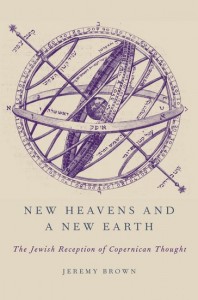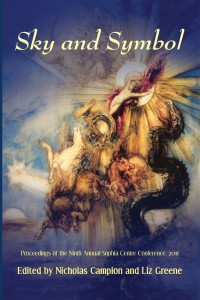Jan 03 2014
Recent publication: ‘New Heavens and a New Earth: The Jewish Reception of Copernican Thought’
Published in 2013, New Heavens and a New Earth: The Jewish Reception of Copernican Thought, by Jeremy Brown (Oxford University Press) is described as the “first comprehensive examination of the Jewish reception of Copernican thought,” spanning four centuries of Jewish commentary on the Copernican model. In his research, Brown also demonstrates the ways in which religions tend to evolve to make room for new scientific findings, however threatening they may have initially appeared to be.
Here is the table of contents:
Introduction
Chapter 1 – Nicolas Copernicus and His Revolution
Chapter 2 – The Talmudic View of the Universe
Chapter 3 – David Gans and the First Mention of Copernicus in Hebrew Literature
Chapter 4 – The First Jewish Copernican: Rabbi Joseph Solomon Delmedigo
Chapter 5 – ”Copernicus Is the Son of Satan.” The First Jewish Rejections of Copernicus
Chapter 6 – David Nieto and Copernicanism in London
Chapter 7 – The Jewish Encyclopedias
Chapter 8 – The Eighteenth Century. Jews and Copernicus in the Newtonian Era
Chapter 9 – ”I Have Written a Book For the Young People.” David Friesenhausen’s Mosdot Tevel
Chapter 10 – The Nineteenth Century: Copernicus Without Hesitation
Chapter 11 – ”Let Copernicus and a Thousand Like Him Be Removed From the World.” Reuven Landau’s Rejection
Chapter 12 – The Modern Period
Chapter 13 – Relativity and Contemporary Jewish Geocentrists
Chapter 14 – Conclusions
Appendix
Bibliography
If any of my readers happen to pick this up, I’d welcome your comments here. Happy new year to all!



